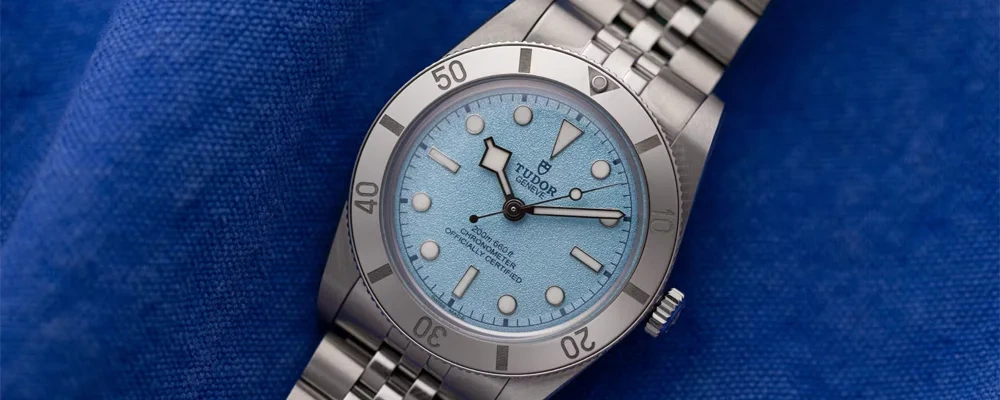Fame Through Centuries - The History of Blancpain
In light of the recent Swatch x Blancpain Collaboration that has shaken the world of horology and made people wait outside the Swatch showrooms for hours just to get the beautiful Fifty Fathoms timepieces, we think it is essential to know and understand the importance of this spectacular occasion. Blancpain is the oldest watchmaker in the world, and its history is a testament to its legacy in the world of fine timepieces.
The Beginnings of Blancpain
The Blancpain journey began in 1735 when Jehan-Jacques Blancpain, a versatile individual who had stepped into various professions, decided to officially establish himself as a watchmaker. Born in 1693 into a family of farmers, Jehan-Jacques was a man of many talents, having worked as a breeder of horses and cattle, a school teacher, and even served as the mayor of Villeret, a Swiss municipality in the canton of Bern.
In 1735, Jehan-Jacques set up his first workshop on the upper floor of his farmhouse, where he began crafting timepieces that would eventually bear the prestigious Blancpain name. While it is believed that Blancpain's horological journey may have started even earlier, 1735 serves as the official foundation year, making Blancpain the oldest continuously operating watch company in the world.
 Photo source: Blancpain
Photo source: Blancpain
Frédéric-Louis Blancpain: Revolutionizing Production
The Blancpain legacy was propelled into the modern era by Frédéric-Louis Blancpain, the great-grandson of Jehan-Jacques. In 1815, he implemented significant upgrades to the workshops, introducing modern production techniques and revolutionizing the escapement design. Frédéric-Louis's innovations paved the way for the brand's transition from a low-volume craft workshop to a more industrialized operation.
Among his notable achievements was the introduction of an ultra-thin construction, showcasing Blancpain's mastery in pushing the boundaries of watchmaking. His dedication to horology solidified Blancpain's reputation for producing exquisite and highly finished traditional timepieces.
Photo source: Blancpain
Betty Fiechter: A Trailblazing Leader
In the early 20th century, Blancpain faced significant challenges as the Swiss watchmaking industry struggled with the emergence of quartz watches from the Far East. It was during this period that Betty Fiechter, a dedicated and skilled watchmaker, entered the scene. Betty joined Blancpain as an apprentice at the age of 16 and quickly rose through the ranks, ultimately becoming the head of manufacturing and commercial development.
Upon the passing of Frédéric-Emile Blancpain in 1932, Betty Fiechter assumed the role of CEO, becoming the first female CEO of a leading watchmaking company. Under her leadership, Blancpain not only withstood the challenges of the era but thrived, thanks to Betty's dedication to preserving Blancpain's heritage and commitment to crafting mechanical watches that could compete even with the giants of the industry.
Photo source: Blancpain
Jean-Jacques Fiechter and the Fifty Fathoms
In the 1950s, Betty Fiechter was joined by her nephew, Jean-Jacques Fiechter. Together, they started a journey that would lead to one of Blancpain's most iconic achievements—the creation of the Fifty Fathoms.
Inspired by a request from the French navy for a reliable diving watch, Jean-Jacques spearheaded the development of the Fifty Fathoms, which became the world's first modern diving watch. Its name, "Fifty Fathoms," signified its impressive water resistance of approximately 91.5 meters (300 feet), measured in fathoms. This groundbreaking timepiece played a pivotal role in the development of scuba diving and remains an enduring symbol of Blancpain's ingenuity and skill.
Photo source: Blancpain
The Revival and Innovation
In the face of industry-wide challenges, Blancpain once again demonstrated its resilience and commitment to traditional watchmaking. In 1982, Jacques Piguet and Jean-Claude Biver acquired Blancpain, setting the stage for a new era of the brand.
Under their stewardship, Blancpain reaffirmed its dedication to mechanical timepieces, boldly declaring, "Since 1735, there has never been a quartz Blancpain watch. And there never will be." Blancpain's focus on producing classic mechanical watches in limited numbers, often featuring intricate complications, set it apart in a rapidly evolving industry.
Photo source: Haute Time
The Legacy Continues
Today, Blancpain stands as a testament to centuries of horological expertise and prides itself on preserving the art of watchmaking. From its humble beginnings in Jehan-Jacques Blancpain's farmhouse workshop to its position as one of the most prestigious watch brands in the world, Blancpain's journey through time is a story of resilience, dedication, and unshakable standards.
As part of the Swatch Group, Blancpain continues to uphold its legacy while embracing new technologies and redefining what is possible in the world of watchmaking. With collections like Villeret, Fifty Fathoms, Léman, Air Command, Ladybird, and Métiers d'Art, Blancpain offers a diverse range of timepieces that cater to both tradition and modernity.
In an industry that constantly shifts, Blancpain remains a beacon of excellence, reminding us that some traditions are timeless, and some legacies are forever imprinted in the fabric of history.
Related Articles
Richard Mille re-releases their signature model in titanium - is it a good choice?

